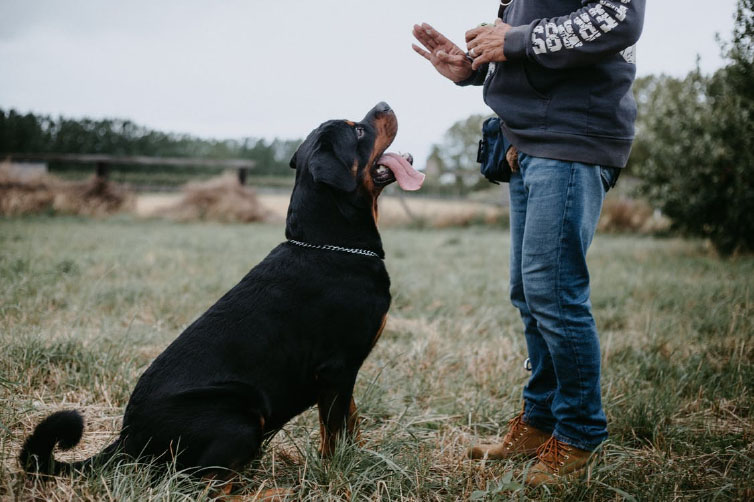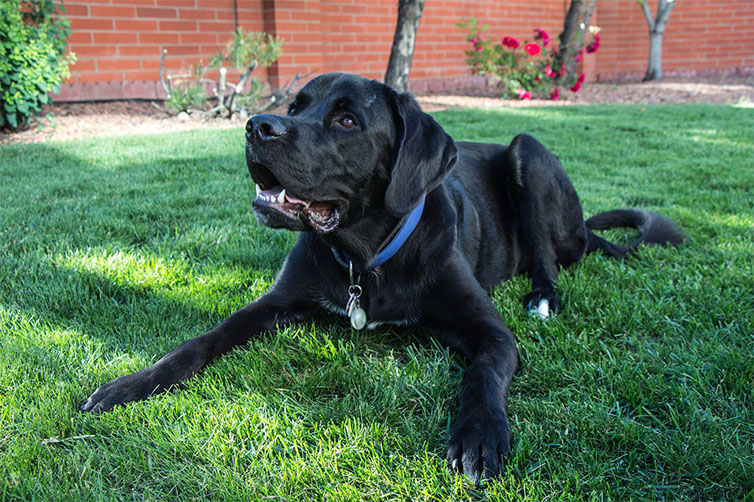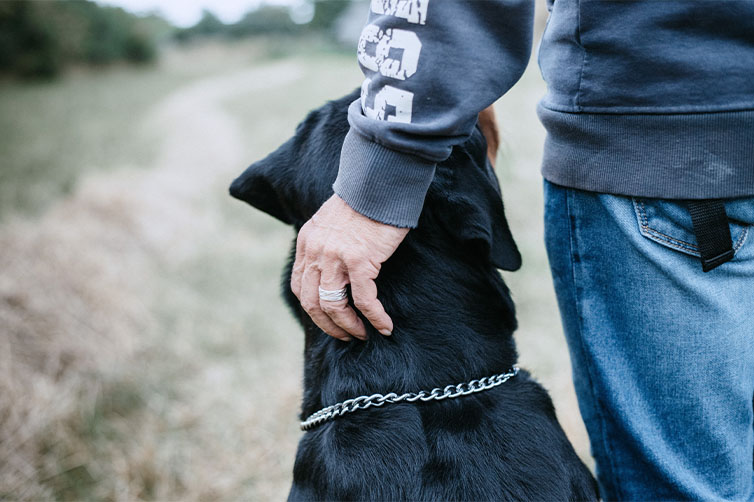How to Stop Dogs from Barking at Every Little Thing
Are you at your wit’s end trying to deal with your loyal pal barking at anything and everything? You can’t expect your dog to completely stop barking – that’s unreasonable. You can, however, find the cause of their barking and start treating and training them from there. Read on to learn how to stop dogs from barking excessively.
DOG TIPS AND TRICKS

Posted by bravectosouthafrica – 29 April 2020
Why Is My Dog Barking?
Dogs communicate vocally by barking and it can mean a variety of different things, it all depends on the situation. Seven of the most common reasons why dogs bark are to voice their:
- Alarm/fear: When something – whether it’s an object or a sudden noise – catches your dog’s attention or surprises them, they may feel the need to bark. This can occur both on and off their home territory.
- Anxiety: Some dogs suffer from separation anxiety. One of the tell-tale signs of this condition is compulsive barking when left alone. Other symptoms include depression, destructiveness, elimination disorder and pacing.
- Boredom/loneliness: If your neighbours frequently complain about your dog’s barking while you’re away from home, they may be barking because of boredom or loneliness. Dogs are pack animals, after all. When left alone for too long, they’ll start barking to show their unhappiness.
- Compulsion: There are dogs out there whose only reason for barking seems to be their love of their own voices. This behaviour usually goes hand in hand with repetitive movements, e.g. running around in circles or along a fence line.
- Greeting/playfulness: Dogs may also feel the need to bark in greeting to other animals or people. You’ll clearly hear the happiness in their bark and it will usually be accompanied by jumping around and tail wagging.
- Need for attention: Your dog may be barking because they want something from you. They might want to ask you to go out outside, play or for a treat, amongst other things.

How to Stop Your Dog from Barking (Or at Least Get Them to Tone It Down)
Before we get started on possible solutions to your dog’s excessive barking, please keep in mind that their behaviour won’t change overnight. You can indeed teach an old dog new tricks, it’s just going to take time. The longer your dog’s barking behaviour has been going on, the longer it will take for them to unlearn it.
We’ve compiled a list of six methods you can try to break your dog’s barking habit. Take note that some of these methods require you to know what their triggers are.
Now, before we get started on the possible solutions, have a read through our training tips:
- Consistency is key when training, otherwise your dog will just get confused. All members of your household need to apply the set training methods whenever your dog starts their inappropriate barking. Allowing your dog to occasionally get away with their inappropriate barking will undo all the good you’ve already done.
- Don’t use a muzzle or any other form of restraint on your dog to keep them quiet for prolonged periods of time or when they’re unsupervised. It can endanger your dog’s life.
- Never shout at your dog to quiet down – they’ll simply think you’re trying to bark along. Keep your tone of voice calm, yet firm.
- Remain positive and upbeat during your training sessions, for the sake of your dog.

Don’t Acknowledge Your Dog’s Barking
Example of trigger: Being confined to a certain space
This one may require quite a bit of patience on your part. It might sound simple, but it can prove to be extremely effective when used to treat the right trigger.
You’ll want to ignore your dog’s barking for however long it takes for them to stop. Don’t give them any kind of attention during their barking session. That means no looking at them, no talking to them and no touching them. If you do, you’ll only reward them for displaying the behaviour you’re trying to stop.
Once your dog stops barking, even if it’s only to catch their breath, be sure to reward them with a treat. We can’t stress this enough: for this training method to be a success, it is crucial that you wait out your dog’s barking without intervention – no matter how long it may take. If they continue barking for an hour and you finally lash out due to frustration, they’ll have learnt only that continued barking eventually leads to attention. Next time your dog will probably bark twice as long.
Get Your Dog Used to Whatever’s Triggering Their Barking
Example of trigger: Other dogs
Start by gradually putting your dog at ease with the trigger that’s causing them to bark. Begin by keeping their trigger at a distance – far enough away that they don’t bark the minute they see it. Proceed to feed your dog some of their favourite treats. Now move their trigger a bit closer (it can be as little as a few centimetres to start with) and feed them treats again. As soon as their trigger has been moved completely from sight, stop feeding them treats.
This method will help your dog associate their trigger with good things – i.e. yummy treats.
Keep Them Dog-Tired
How to stop dogs from barking can be as easy (or hard!) as making sure they’re getting enough mental and physical stimulation each day. When your dog is tired, they’re more likely to display good behaviour. On the other hand, a dog with loads of pent-up energy is likelier to bark due to boredom or pure frustration.
Your dog’s age, breed and health will determine how much stimulating exercise is needed to wear them out.

Remove Whatever’s Motivating Your Dog to Bark
Example of trigger: People (and animals) walking by your house
Your dog likely wouldn’t be barking excessively if it didn’t pay off for them somehow. You need to figure out what perceived reward they’re getting from barking and then remove it. Don’t provide your dog with the opportunity to continue their inappropriate barking.
Teach Your Dog to Be Quiet
Example of trigger: There’s someone at the door
We know it sounds crazy but teaching your dog to bark on command could be the answer to your prayers. Hear us out – command your dog to ‘speak’ and then wait for them to bark a few times. After doing this, praise and reward them with a delicious treat. You’ll want to repeat the process until your dog can bark as soon as you command them to ‘speak’.
Now that they’ve mastered barking on command, move on to quieting down on command. Make sure you practice this in a calm environment, free of any distractions. Command your dog to ‘speak’ and when they start barking, say ‘quiet’ and offer them a treat. As soon as they comply, give them the treat and praise their cooperation.
Next time your dog starts barking, try to get them to settle down with their new skill.
Teach Your Dog to React with Incompatible Behaviour
Example of trigger: There’s someone at the door Have your dog do something that doesn’t allow barking as soon as they start to bark. For example, command your dog to go lie down in their bed as soon as they’re triggered by a barking stimulus.
If you’d like a more detailed explanation of how to implement each of these training methods, be sure to have a look at The Humane Society of The United States’ article on the subject.

Non-Training Methods to Stop Your Dog from Barking
If you’re looking into alternative methods to put a stop to your dog’s constant barking, why not consider investing in sight barriers or creating a ‘quiet zone’ for your dog?
We’ll have a brief look at both of these alternatives below. For more alternatives and details, read Rover.com’s full article.
Invest in Sight Barriers
Wondering how to stop territorial dogs from barking? By investing in a sight barrier for your yard! This solution should work for both dogs that bark out of territoriality or alarm. It’s the most immediate way to deal with dogs barking around the fence line and at windows. No matter whether you’re on the lookout for a permanent or temporary sight barrier solution, there’s a whole host of options available for indoor and outdoor use.
If your dog keeps barking at the windows, the solution can be as simple as drawing the blinds or curtains until their trigger has gone. Alternatively, you can apply a removable film that makes your windows hazy or use some spray-on glass coating for the same effect.
Opt to install a privacy fence or screening in your yard to block your dog’s sight. For a prettier alternative, why not plant a privacy hedge?
Create a ‘Quiet Zone’
If your dog suffers from separation anxiety and starts barking as soon as you leave the house, consider creating them a safe and comfortable ‘quiet zone’. This space should ideally be situated away from the front door.
Your dog’s ‘quiet zone’ can include:
- Some of their favourite chew toys or a puzzle feeder to keep their jaws busy with something other than barking.
- A dog crate fitted with comfy bedding and a privacy cover.
- A baby gate to block them off, if necessary.
- Something to mask sounds from outside, but leave your dog feeling comforted, such as a fan, radio or white noise machine.
Now You Know How to Stop Your Dog From Barking
One of the suggestions in this article is bound to be able to solve your dog’s barking problem. If not, consult with your vet or a certified dog trainer – there could be another underlying cause to your dog’s constant barking.
Remember that dogs bark to alert their humans of perceived dangers as well. They have our best interests at heart, and we should have theirs. That’s why it’s so important to keep a close eye on your dog’s health and be proactive. Keep your best bud protected against external parasites for the long run with Bravecto® .
Bravecto® for Dogs is available in two forms: a tasty, chewy treat or a convenient topical treatment. Both require only a single dose and offers fast-acting and long-lasting protection. The Bravecto® Chew will provide your dog with 12 weeks of tick and flea protection. Bravecto® Spot- On for Dogs ensures your dog is safe from ticks for 4 months and from fleas for 6 months.
When using Bravecto® you don’t have to constantly worry about your dog contracting various tick- and flea-borne diseases while the two of you are out and about enjoying life. We care about your fur-baby just as much as you do.

Subscribe to our Newsletter
Get to know your furry friend better! Sign up for all things dog- or cat-related.
The Hairy Facts about the dreaded hairball
12 April 2021
Help! My dog’s barking mad! Volume 2
12 April 2021
Your Itchy, Scratchy Cat – All About Cat Skin Problems
12 April 2021
The Dog’s Diet: A Bone of contention?
01 April 2021
Mango Fly Worms: How to Spot and Eliminate them
Posted on November 28,2019
Managing Mange And Mites In Your Dog
Posted on June 11,2018
Why Do Cats Purr and How? Learn What Your Cat Is Saying
Posted on October 14,2020
How to Get Rid of Ear Mites in Dogs
Posted on November 06,2019









